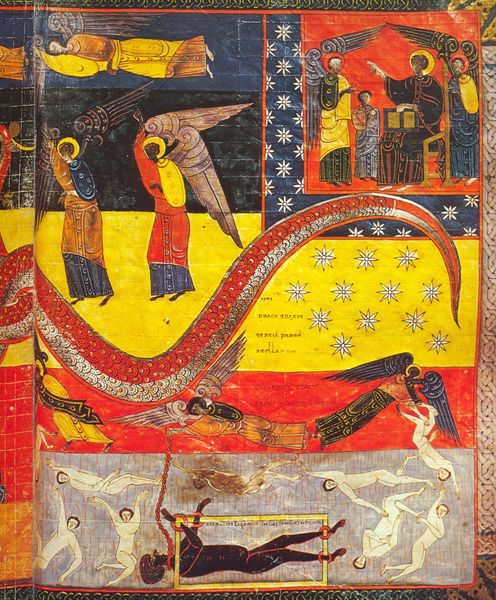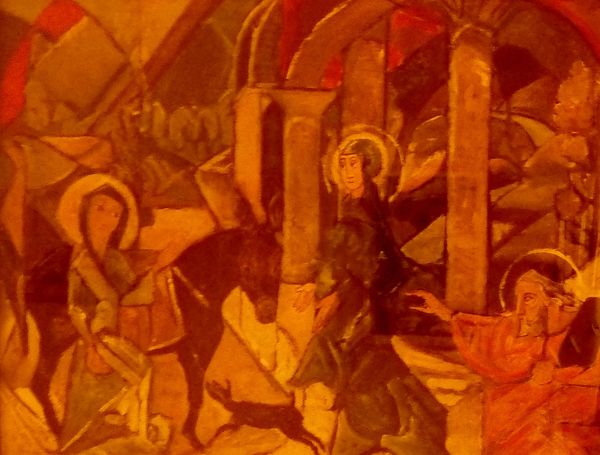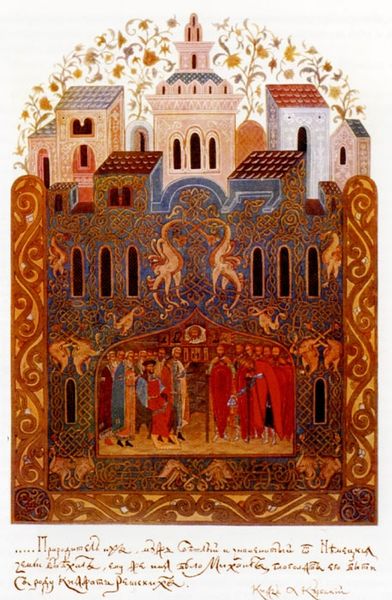
tempera, painting
#
byzantine-art
#
medieval
#
narrative-art
#
tempera
#
painting
#
figuration
#
painting art
#
miniature
Copyright: Public domain
Curator: What strikes me immediately is the rich, saturated colour; a glowing, otherworldly quality to the pigment. Editor: We're looking at a tempera painting, its precise origins are not available to us but bearing the title, "L'Ange remet à Jean la lettre pour l'Eglise d'Ephèse. Apoc. II." It clearly depicts a scene from the Book of Revelation, focusing on an angel delivering a letter to John concerning the Church of Ephesus. Curator: The angel appears quite stern. Do you think the visual representation carries over into emotional communication? The angel looks serious, concerned. The weight of that scroll, the importance of the message... it's all conveyed so vividly. Editor: Indeed. Angels in this era were frequently employed to signify the messages and commands of the divine, acting as visual representations of communication and authority. Consider the way the angel's dark robe starkly contrasts with John's bright, warm cloak. Curator: Right, I see that contrast, what’s striking is the deliberate use of what seem to be common materials and techniques—the tempera, the almost geometric rendering. Look closely, one may ask whether they knew about perspective techniques. Everything is meticulously laid down. The materiality almost reinforces the seriousness of the depicted message, almost giving insight into medieval views of apocalyptic content. Editor: Precisely. Beyond that, let’s turn our attention to the architectural element; the Church. That striking architectural form in the background. Inscriptions are important; look at the careful rendering of the word "Ephesus" on the doorway. It transforms the church from a building into a sign, directly connecting it with the intended recipient of this divine communication, literally anchoring this symbolic scene in tangible materiality. Curator: The overall structure is also part of this experience of "looking." It has that almost self-conscious, flattened appearance; not concerned with mimicking reality, but expressing meaning and it makes us consider: for what audience? Editor: That question takes me back to how we see the art: looking closely here, one almost detects the signs of the artist's labour. Thinking about who was laboring to mix those paints, lay down those lines... that brings the human element into something that looks otherworldly. Curator: It really shifts my sense of the piece, considering it. Seeing that connection. Editor: Well, considering all these things really enrich the viewing experience, right? The convergence of materiality and symbolism and how that speaks of a bigger sociohistorical picture.
Comments
No comments
Be the first to comment and join the conversation on the ultimate creative platform.













